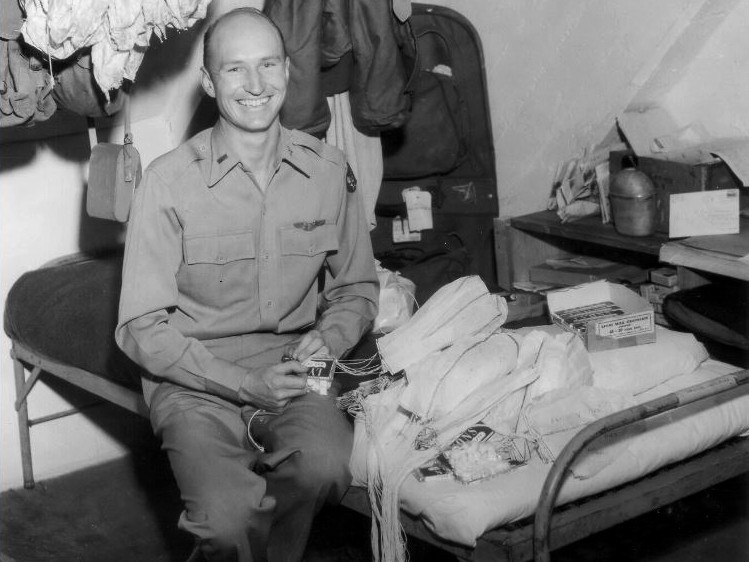Today in 1948, an unusually sweet moment in the history of the Cold War.
It’s when an American servicemember named Gail Halvorsen came up with a plan that would eventually earn him a new nickname: the Berlin Candy Bomber.
First, some background.
In the summer of 1948, Germany was divided; the West was backed by the US and its allies, while East Germany was aligned with the USSR.
The former capital city of Berlin was similarly split, even though it was located entirely within East Germany.
And in June 1948, Soviet forces started a land blockade.
They refused to let Western cars, trucks, trains or boats bring supplies to West Berlin.
For over a year, the US led the Berlin Airlift, sending plane after plane after plane to defy the blockade and resupply West Berlin.
Gail Halvorsen was part of that enormous effort.
While stationed in Berlin, he met some local kids and offered them the only treat he had on hand, a couple sticks of gum.
Which they broke into pieces and shared as if it was the most exciting thing ever.
Two sticks of gum!
Some kids who couldn’t get an actual piece of the candy asked to smell the wrapper!
Halvorsen understood that the Airlift was focused on getting Berliners essentials like food, medicine and clothing.
But his heart also went out to the kids, so he promised them that somehow he would find a way to bring them more candy.
Which he did.
Halvorsen started asking others in the Air Force to donate their candy rations to what he would call Operation Little Vittles.
He told the kids to watch for a plane that wiggled its wings as it arrived, which would be the one bringing them candy.
For three weeks he and his colleagues kept this up, and they started getting thank you letters addressed to “Uncle Wiggly Wings” or “The Chocolate Bomber.”
The letters and the candy drops ended up getting the attention of top military officials.
Halvorsen thought he would get in trouble for essentially going into business for himself, but the top brass loved the candy drops.
The US and other European countries had been trying to keep up public support for the Airlift.
And now they had a public face for the effort: an Air Force pilot dropping candy to kids living through a Cold War blockade.
By the time the Soviets lifted their blockade, the Airlift had brought the children of West Berlin over 20 tons of candy.
For the rest of his life, Halvorsen would have meetings and get letters from kids who lived through the Airlift.
Some of them thanked him for the candy.
Some never even got candy, but thanked him anyway for giving them hope, for showing that someone cared about them.
Gail Halvorsen, the Berlin Candy Bomber, said there was a lesson from all this: “The small things you do turn into great things.”
Today in 1952, David Hasselhoff was born.
He’s been a TV star, a movie star, a German music sensation and the namesake of a species of crab.
These deep sea crabs have hairy chests, so the scientists decided to name them Hoff crabs.
Which just proves my theory: Germans love Hoff crabs.
The Sweet Story of the Berlin Candy Bomber (Smithsonian)
Candy bomber visits Saber family, imparts wisdom (Spangdahlem Air Base)
Discovered in the deep: the mini cities of hairy-chested Hoff crabs (The Guardian)
It would be so sweet if you backed our show on Patreon
Photo by U.S. Air Force via Wikicommons

